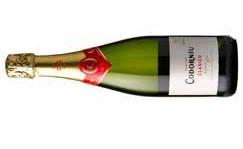From Far And Wide, Let’s Eat! Food to Power the Body and Soul: Chinese-Albertan Stories From hometown favourites to fusion, Chinese immigrants make Alberta feel like home BY SABRINA KOOISTRA
I
n the 1860s, thousands of young chinese migrants left their village homes in China for the Gold Rush in California and British Columbia. While the work was gruelling and abusive, it offered wealth to send home and to start a new life abroad. In the 1880s, thousands more answered the call to build Canada’s first national connector, the Canadian Pacific Railway through the Rockies to Calgary and later, the Canadian National Railway from Edmonton to Winnipeg. Around the same time, Edmonton became its own hub of
30 Culinaire | January/February 2021
opportunity; as the gateway to the Klondike Gold Rush, the city developed a Chinese community of its own, with Chinese men taking part in the trek north for gold and other minerals. Despite social prejudices and racist legislation, many Chinese immigrants joined regional or clan-based “Tong Associations” or “Benevolent Societies” in Calgary and Edmonton, where they gather for food and fellowship to quell homesickness, cope with racism, and pursue success together. One of these organizations is the Chinese Benevolent Association (CBA) in Edmonton.
“The history of the CBA consists of the continuous struggle for the wellbeing of the members of the Chinese community… The Edmonton Chinese community has grown bigger… and pockets of businesses owned and catering to those communities can be found throughout the city.” From the early 20th century to the 1960s, Chinese food forged a place in Edmonton and Calgary by westernizing the cuisine from the Guangdong Province to appeal to its non-Asian clientele. This changed in the 1970s when businesses, students, and family-














